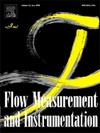Experimental measurement of particle flow and energy performance in a centrifugal pump
IF 2.3
3区 工程技术
Q2 ENGINEERING, MECHANICAL
引用次数: 0
Abstract
Pumps are among the most critical equipment in deep-sea mining, and the transported mineral particles directly influence pump performance and operational longevity. To investigate the particle motion mechanism and its influence on pump performance, high-speed photographic visualization experiments were conducted to analyze the effect of the Particle Reynolds number (Ret) on particle dynamics within the pump. The results reveal that at low Ret values, particles are randomly distributed within the pump. However, as Ret increases, particles gradually migrate towards the blade pressure surface and deposit on the volute wall. Particles enter the impeller at divergent angles, collide with the blades, and ultimately accumulate near the blade trailing edges after stabilization. After entering the impeller, the radial distance from the rotation center to particle impact points on the blades decreases with impeller rotation. Absolute trajectory analysis indicates that larger particles traverse the impeller faster, whereas relative trajectory analysis reveals their tendency to concentrate near the blade pressure surface. At low Ret, the head exhibits a slight increasing trend. As Ret and particle volume fraction increase, the head gradually declines. Based on comprehensive experimental data, a head reduction equation incorporating median particle size, density, and volume fraction was developed and validated. These findings elucidate particle motion mechanisms and offer theoretical insights for designing solid-liquid two-phase flow pumps.
离心泵内粒子流和能量性能的实验测量
泵是深海采矿中最关键的设备之一,输送的矿物颗粒直接影响泵的性能和使用寿命。为了研究粒子运动机理及其对泵性能的影响,采用高速摄影可视化实验分析了粒子雷诺数(Ret)对泵内粒子动力学的影响。结果表明,在低Ret值时,粒子在泵内是随机分布的。然而,随着Ret的增大,颗粒逐渐向叶片压力面迁移并沉积在蜗壳壁上。颗粒以发散角进入叶轮,与叶片发生碰撞,稳定后最终积聚在叶片尾缘附近。进入叶轮后,颗粒从旋转中心到叶片上颗粒撞击点的径向距离随着叶轮的旋转而减小。绝对轨迹分析表明,较大的颗粒通过叶轮的速度更快,而相对轨迹分析表明,颗粒倾向于集中在叶片压力面附近。在低Ret时,水头呈轻微上升趋势。随着Ret和颗粒体积分数的增加,水头逐渐减小。在综合实验数据的基础上,建立并验证了包含中值粒径、密度和体积分数的水头还原方程。这些发现阐明了颗粒运动机理,为固液两相流泵的设计提供了理论依据。
本文章由计算机程序翻译,如有差异,请以英文原文为准。
求助全文
约1分钟内获得全文
求助全文
来源期刊

Flow Measurement and Instrumentation
工程技术-工程:机械
CiteScore
4.30
自引率
13.60%
发文量
123
审稿时长
6 months
期刊介绍:
Flow Measurement and Instrumentation is dedicated to disseminating the latest research results on all aspects of flow measurement, in both closed conduits and open channels. The design of flow measurement systems involves a wide variety of multidisciplinary activities including modelling the flow sensor, the fluid flow and the sensor/fluid interactions through the use of computation techniques; the development of advanced transducer systems and their associated signal processing and the laboratory and field assessment of the overall system under ideal and disturbed conditions.
FMI is the essential forum for critical information exchange, and contributions are particularly encouraged in the following areas of interest:
Modelling: the application of mathematical and computational modelling to the interaction of fluid dynamics with flowmeters, including flowmeter behaviour, improved flowmeter design and installation problems. Application of CAD/CAE techniques to flowmeter modelling are eligible.
Design and development: the detailed design of the flowmeter head and/or signal processing aspects of novel flowmeters. Emphasis is given to papers identifying new sensor configurations, multisensor flow measurement systems, non-intrusive flow metering techniques and the application of microelectronic techniques in smart or intelligent systems.
Calibration techniques: including descriptions of new or existing calibration facilities and techniques, calibration data from different flowmeter types, and calibration intercomparison data from different laboratories.
Installation effect data: dealing with the effects of non-ideal flow conditions on flowmeters. Papers combining a theoretical understanding of flowmeter behaviour with experimental work are particularly welcome.
 求助内容:
求助内容: 应助结果提醒方式:
应助结果提醒方式:


